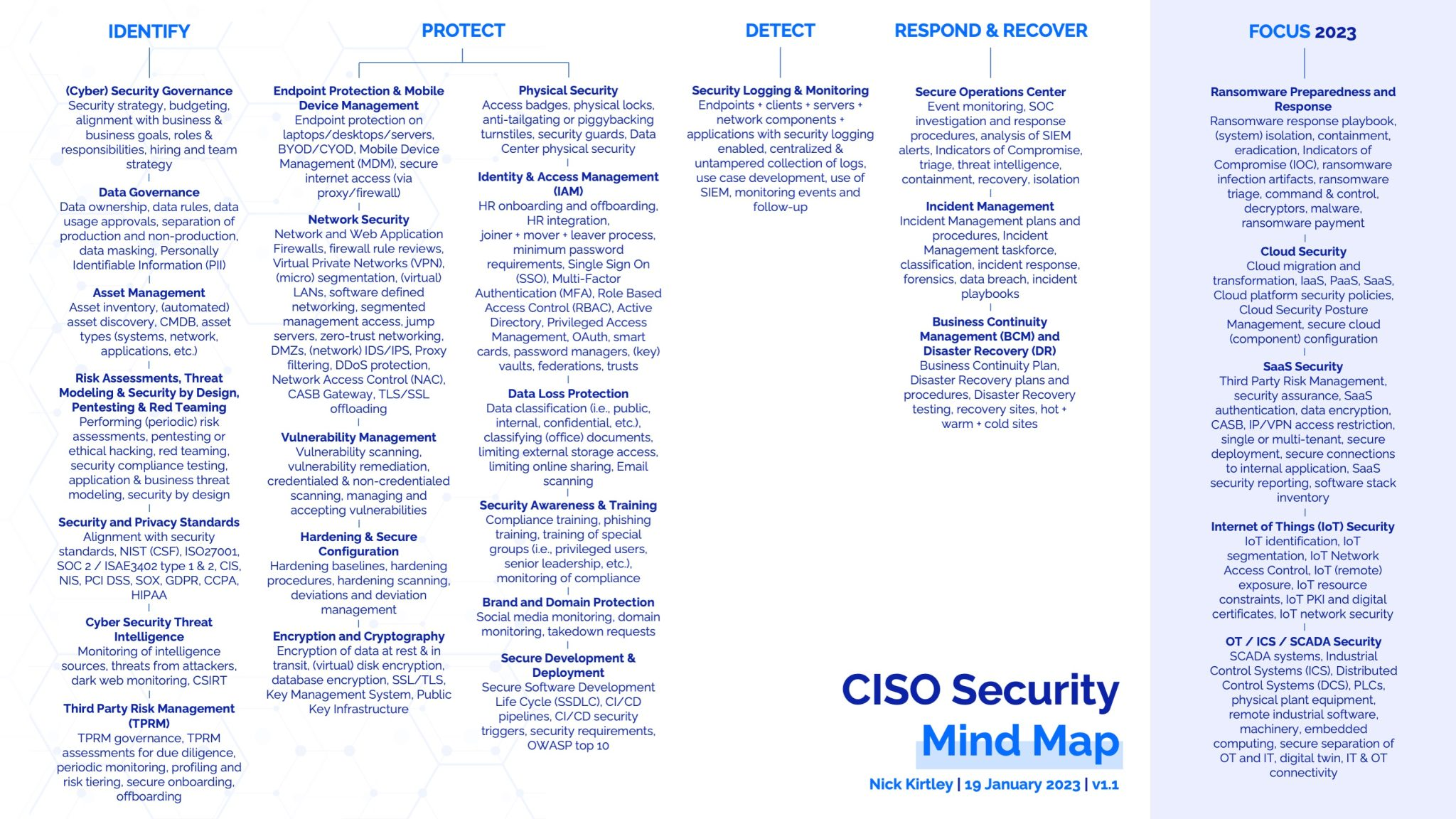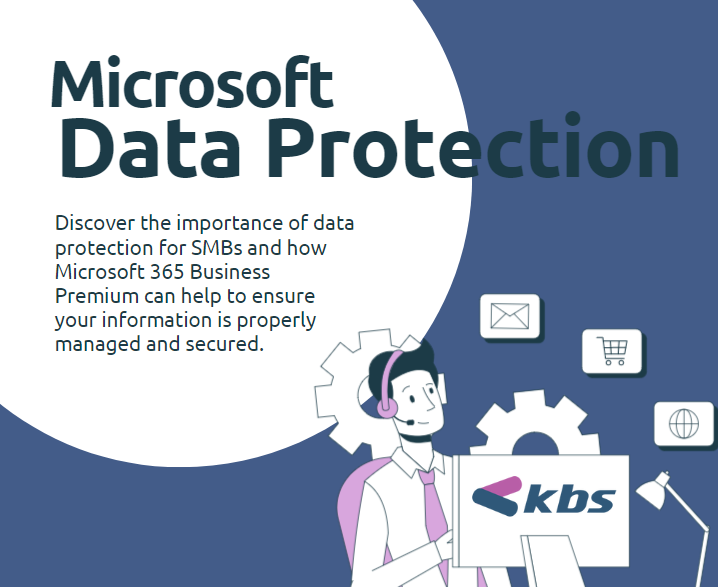In today’s digital landscape, a robust CISO cybersecurity strategy is imperative for organizations aiming to safeguard against emerging threats. With escalating cyber risk management challenges like data breaches and inadequate cloud security practices, Chief Information Security Officers must prioritize proactive data security initiatives. Understanding the endpoint security evolution is crucial, as traditional defenses have become less effective against sophisticated attacks. By aligning cybersecurity priorities with overall business objectives, CISOs can create resilient infrastructures capable of countering evolving threats. As highlighted by industry leaders, consistent vigilance and adaptation within security strategies are essential for mitigating the complex risks associated with modern technology.
The role of cybersecurity leadership has evolved dramatically as organizations confront a myriad of security obstacles. Security executives, often referred to as Chief Information Security Officers, are now tasked with integrating risk management frameworks that address challenges associated with cloud environments, IoT devices, and mobility. By fostering a culture of security awareness and implementing comprehensive data protection initiatives, leaders can enhance their organization’s resilience against cyber threats. Notably, the progression of endpoint security and the implementation of advanced technologies like AI and machine learning further shape strategic defenses. Ultimately, the obligation of CISOs to bridge the gap between technology and business underscores a growing recognition of security as a fundamental component of organizational success.
Understanding Cloud Security Challenges in Today’s Digital Landscape
As organizations increasingly migrate to cloud-based solutions, they face a multitude of security challenges that cannot be overlooked. Data breaches, which pose a significant threat to maintaining customer trust and corporate reputation, often arise from improper configurations and vulnerabilities within the cloud infrastructure. Moreover, the misuse of cloud services, such as employees utilizing personal accounts for company resources, introduces additional risk factors. To tackle these vulnerabilities, businesses must adopt robust data security initiatives that encompass thorough risk assessments and only partner with cloud service providers that uphold stringent security practices.
To address these growing concerns, a proactive approach is essential. Companies should implement strong identity and access management measures, not only to protect data but also to ensure that only authorized personnel can access sensitive information. Regular audits and assessments of cloud security practices are a fundamental component of cyber risk management. This allows organizations to identify potential gaps and rectify them promptly, thereby reinforcing their security posture amidst evolving threats.
CISO Cybersecurity Strategy: Aligning Business and Security Goals
A CISO’s cybersecurity strategy must be intricately tied to the overall business strategy to be truly effective. By fostering collaborative relationships with key functional heads, a CISO can ensure that the cybersecurity measures in place are not only protective but also supportive of business objectives. This alignment is crucial in developing a culture of shared responsibility for data security initiatives. Furthermore, continuous security awareness training serves to empower employees and elevate security as a collective priority across the organization.
As threats evolve and cybersecurity priorities shift, maintaining regular communication about business risks with top management is vital. A transparent approach helps ensure that security concerns are integrated into executive decision-making, reflecting the understanding that cybersecurity is a business imperative and not just an IT issue. Therefore, the CISO’s influence in strategic planning significantly weighs into the security landscape, making it essential for leaders to adapt and evolve their cybersecurity strategies continually.
The Evolution of Endpoint Security: Navigating New Risks
Endpoint security has experienced a dramatic transformation, largely due to the rise of sophisticated cyber threats such as zero-day attacks and fileless malware. Traditional antivirus solutions, once deemed sufficient, now struggle to address the complexity of these modern threats. As threat actors become more innovative, businesses must strengthen their endpoint security protocols to safeguard sensitive data and maintain operational integrity. This evolution necessitates not only adopting advanced security technologies but also fostering an environment of continuous learning and adaptation to emerging cyber risk management trends.
To effectively navigate the new risks inherent in endpoint security, organizations should employ more holistic solutions that utilize machine learning and artificial intelligence for enhanced threat detection capabilities. These technologies can significantly reduce false positives while improving response times to actual threats. The transformation of the endpoint security landscape underscores the need for organizations to engage in more comprehensive strategies that encompass regular reviews and updates to policies and practices pertaining to endpoint protection.
Leveraging Emerging Technologies for Enhanced Cybersecurity
With the advent of groundbreaking technologies such as blockchain, machine learning, and artificial intelligence, digital enterprises are now better equipped to enhance their security frameworks. These innovations not only bolster existing infrastructure but also provide transformative capabilities that improve threat detection and response times. By integrating such technologies into their operations, organizations can shift from reactive to proactive strategies, anticipating potential threats before they manifest.
Additionally, the utilization of these emerging technologies facilitates improved data integrity and security processes, making it more difficult for cybercriminals to penetrate corporate defenses. However, to fully harness the potential of these advancements, CISOs must remain vigilant. Continuous training and adaptation of practices in alignment with technological advancements are essential for maintaining robust cybersecurity measures. The future of cybersecurity will depend on an organization’s ability to embrace change and leverage technological innovations adeptly.
Key Cybersecurity Priorities for Forward-Thinking Organizations
Looking forward into the cybersecurity landscape, organizations must prioritize increasing security awareness and education among their employees. As insider threats continue to pose significant risks, fostering a culture of security within the workforce is essential. Organizations should regularly review and fine-tune their security practices to ensure they remain effective and compliant with evolving regulatory standards. This ongoing process of assessment helps to identify any new vulnerabilities that may emerge from changing business models and technological advancements.
Furthermore, particular attention should be directed towards security standards for cloud services and third-party vendors. Ensuring compliance across these areas will greatly enhance an organization’s security framework. Strengthening application-level, database-level, and endpoint-level security practices is imperative in effectively mitigating risks associated with cyber threats. As organizations embark on these security initiatives, a commitment to collaborative efforts and ongoing training will ultimately set the foundation for a secure digital environment.
Transforming the Role of CISO in the Modern Business Landscape
The role of the CISO is evolving rapidly in response to the increasing recognition of cybersecurity as a critical business priority. No longer confined to merely managing IT security, CISOs are now integral members of the executive team, influencing strategic decision-making at the highest levels. This transformation highlights the importance of understanding business operations to align cybersecurity initiatives with overall business goals, ultimately leading to more effective risk management strategies.
As CISOs assume greater responsibilities and accountability, they must also adapt to the changing technological landscape. This includes staying abreast of new developments in cloud security, data protection, and emerging threats. By engaging with other business leaders and fostering interdepartmental collaboration, CISOs can cultivate a more resilient security culture that prioritizes proactive risk assessment and response, moving towards a future where cybersecurity is an inherent aspect of business strategy.
Data Security Initiatives: Best Practices for Protection
To effectively protect sensitive data, organizations need to implement rigorous data security initiatives that address both internal and external threats. Key practices should include the use of encryption for data at rest and in transit, as well as regular data audits to identify potential vulnerabilities. Moreover, creating incident response plans that encompass all levels of the organization fosters an environment of preparedness, should a breach occur.
Additionally, organizations would benefit from utilizing a data loss prevention (DLP) strategy that monitors and controls endpoint data movement. By being proactive in their approach to data security, both employees and stakeholders can be safeguarded against the risks posed by potential cyber threats. Fostering an organizational culture that prioritizes data security is crucial in mitigating risks effectively and ensuring compliance with global regulations.
Navigating Cyber Risk Management in an Uncertain World
In today’s rapidly changing technological landscape, effective cyber risk management has become synonymous with business viability. Organizations can no longer afford to treat cybersecurity incidents as low-probability events; instead, they must adopt a systematic approach that includes identifying potential risks, assessing their impact, and implementing appropriate mitigative measures. Conducting comprehensive risk assessments, along with engaging in scenario-based planning, allows organizations to prepare for a variety of potential cyber threats.
Moreover, it is essential for businesses to develop a risk-aware culture among employees. Understanding that they play a crucial role in maintaining organizational security can lead to more vigilant behaviors and adherence to security best practices. By staying informed about the latest threats and enhancing their understanding of risk management principles, employees can contribute significantly to the organization’s overall cybersecurity posture, supporting long-term strategic goals.
The Future of Endpoint Security: Trends and Innovations
As cyber threats continue to evolve, the future of endpoint security is heavily focused on advanced technologies that offer greater protection and agility. Trends such as zero trust architecture, which assumes that threats can exist both inside and outside an organization, are gaining traction. By implementing a zero-trust model, companies can enforce strict verification processes for users and devices attempting to access resources, thereby significantly enhancing their security posture.
Simultaneously, the evolution of endpoint security solutions incorporating machine learning and artificial intelligence provides organizations with the ability to detect anomalous behavior in real-time. These innovations enable faster responses to threats while drastically reducing the chances of a successful breach. As organizations invest in these advanced security technologies, they should conduct regular evaluations to ensure that their endpoint security strategies evolve in tandem with the dynamic threat landscape.
Frequently Asked Questions
What are the main cyber security priorities for CISOs in 2023?
In 2023, CISOs must prioritize enhancing cloud security, implementing robust data security initiatives, and improving cyber risk management. Focused attention on endpoint security evolution and ensuring compliance with updated regulations is crucial for protecting sensitive information.
How can CISOs tackle cloud security challenges effectively?
To effectively address cloud security challenges, CISOs should establish transparent security policies, conduct regular assessments of service providers, and ensure continuous monitoring of cloud environments. Implementing advanced authentication methods and regular training for employees are also essential components of a solid cybersecurity strategy.
What role do data security initiatives play in a CISO’s strategy?
Data security initiatives are central to a CISO’s cybersecurity strategy, as they establish the framework for protecting sensitive data. By prioritizing data encryption, access controls, and employee awareness programs, CISOs can mitigate the risks associated with data breaches and unauthorized access.
How does cyber risk management factor into a CISO’s cybersecurity approach?
Cyber risk management is vital for CISOs as it involves identifying, assessing, and mitigating risks to cybersecurity. By implementing a structured framework, CISOs can prioritize vulnerabilities, allocate resources effectively, and ensure that the organization remains resilient against emerging threats.
What advancements are being made in endpoint security evolution?
The evolution of endpoint security is focusing on incorporating AI and machine learning to enhance threat detection and response. CISOs are moving towards zero-trust architectures that ensure only authorized users access sensitive endpoints, significantly reducing the risk of breaches.
Why is collaboration between business and cybersecurity essential for CISOs?
Collaboration between business units and cybersecurity is essential for CISOs as it ensures that security strategies align with business objectives. By integrating cybersecurity priorities into business operations, CISOs can foster a culture of security awareness and accountability throughout the organization.
How can CISOs ensure compliance with cloud security standards?
CISOs can ensure compliance with cloud security standards by regularly reviewing and updating security policies, conducting audits of cloud services, and ensuring that providers possess necessary certifications. Continuous training and updates on regulatory requirements are also key to maintaining compliance.
What challenges do CISOs face with the rise of new technologies like AI and IoT?
CISOs face numerous challenges with the rise of AI and IoT, including increased attack surfaces, the complexity of managing devices, and ensuring privacy and data integrity. Developing effective strategies to manage these technologies while mitigating associated security risks is crucial for a robust cybersecurity stance.
How can a CISO improve organizational security awareness?
A CISO can improve organizational security awareness by implementing regular training sessions, promoting a culture of security mindfulness, and utilizing clear communication channels for reporting security incidents. Creating engaging materials and interactive workshops can enhance understanding and retention of security best practices.
What changes in the CISO role can be expected in the next few years?
In the coming years, the CISO role is expected to evolve towards a more strategic partnership within the business. CISOs will gain increased responsibility for aligning security measures with overall business goals, leading security initiatives, and reporting directly to top management on cybersecurity risks and strategies.
| Key Points | Details | |
|---|---|---|
| CISO’s Role at Federal Bank | Biju K focuses on maintaining fundamental security hygiene and developing cost-effective risk mitigation strategies. | |
| Challenges in Cloud Security | Data breaches, misuse of cloud services, insufficient security practices, and auditability issues. | |
| Security Management Strategy | Conduct regular due diligence on service providers and ensure data control amidst mobility risks. | |
| Key Security Initiatives | Align security and business strategies, provide continuous training, and maintain enterprise-wide security efforts. | |
| Impact of Emerging Technologies | Technologies like blockchain, machine learning, and AI will help bolster security infrastructure and enhance detection. | |
| Lessons from 2017 | Increased endpoint security risks, evolution of attacks, and the need for improved detection and response capabilities. | |
| Cybersecurity Priorities for 2018 | Focus on security awareness, regular review of practices, compliance, and application-level security in cloud services. | |
| CISO Role Evolution | Growing recognition of security as a business priority and expanding influence of CISOs on top management. | |
Summary
A strong CISO cybersecurity strategy is essential for organizations as it addresses contemporary challenges posed by technology advancements. Biju K, as the Chief Information Security Head of Federal Bank, articulates that effective management and risk mitigation are crucial in today’s security landscape. By fostering a comprehensive approach that includes awareness, alignment with business strategies, and vigilance against evolving threats, CISOs can enhance their organizations’ resilience against cyber risks. The integration of emerging technologies further strengthens these strategies, ensuring that businesses not only protect their data but also empower their operational capabilities.



